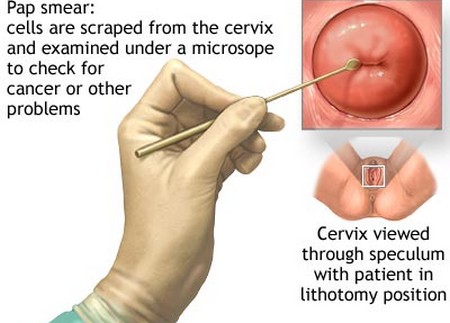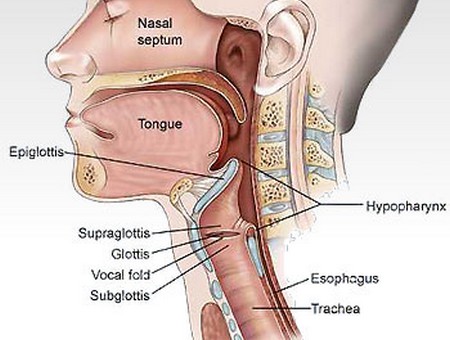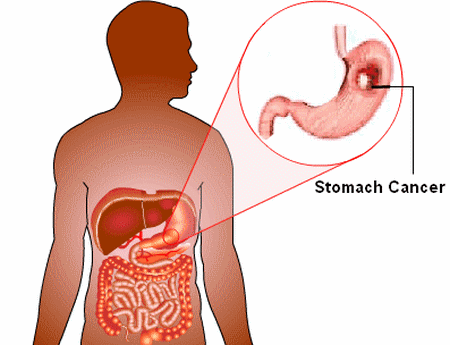When the cells of an organ or tissue in the body become abnormal or stop functioning properly, resulting in the uncontrolled growth of cell or group of cells beyond the normal limits can be signs of cancer. Generally, cells have a normal life cycle. Recycling or reproduction process of the cells throughout the body is a normal thing. This process helps to replace the worn out tissues, to heal wounds, and to maintain healthy organs. But, if the cells begin to grow unchecked and uncontrolled, they form a mass, known as ‘Tumor’.
Tumors are of different nature. Some of them grow only at the area where they begin, called the ‘benign tumors’. While there are others that begin to grow locally but begin to invade and destroy the neighboring tissues. These types of tumors have the tendency to spread to distant parts of the body. Such tumors are called ‘malignant tumors’ or cancers.
At times, malignant cells get separated from the primary tumor and get carried to other parts and start growing there as an independent secondary tumor. The tumor spread in this way has ‘metastasized. The tumor or secondary tumor spread like this is known as a ‘metastasis’.
Brain Cancer
Brain cancers normally include the primary brain tumors, which develop in the brain and stay there. Brain tumor has more than 40 vital types, grouped into two main types that are benign and malignant. Benign tumors are normally slow growing and there are very few chances that they spread. Some of the common benign brain tumors include meningiomas, neuromas, pituitary tumors and cranio-pharyngiomas. Malignant tumors on the other hand, are more cancerous and have tendency to spread to other parts of the brain or spinal cord. Most frequent types include astrocytomas, oligodendrogliomas, ependymomas, glioblastomas and mixed gliomas.
Breast Cancer
When the malignant cells begin to form in the tissues of breast, the cancer is known as breast cancer. The uncontrolled growth of the cells can be seen and these cells accumulate to form lump.
These malignant cells spread to the surrounding breast tissue and often get separated from the primary lump and spread in lymph channels or blood stream to other parts and form secondary lumps (metastases). The breast is divided into ducts and lobules. The most common type of breast cancer develops in the ducts, known as invasive ductal carcinoma. However, the cancer arises from lobules is not as much common and is known as invasive lobular carcinomas.
Bladder Cancer
Bladder is an organ that stores urine and the cancer that develops in tissues of the bladder is known as bladder cancer. The most common bladder cancer develops in cells making the inner lining of the bladder and is known as transitional cell carcinomas. There are certain other types that include squamous cell carcinoma (begins in thin, flat cells) and adenocarcinoma (begins in cells that make and release mucus and other fluids). The major causes of these cancers are chronic irritation and inflammation.
Cancer of Unknown Primary (CUP)
It is a type of metastatic cancer that develops or spreads with an unknown starting point. It is considered as the seventh most common cancer and also the third most common cause of death in Australia, i.e. about 10% of deaths caused by this cancer. In this type of cancer when the cancer cells spread, the secondary cancer cells resemble the abnormal versions of the primary cancer cells, for instance, if breast cancer spreads to the lungs, the metastatic tumor in the lung is more of cancerous breast cells than lung cells and is therefore describe as metastatic breast cancer instead of lung cancer. The process of diagnosing such cancers is known as CUP.
Cervical Cancer
Cervix is the lower part of the uterus (womb) that leads to the vagina (birth canal). Cervical cancer is a type of cancer that begins in the lining of the cervix over time. Over the time, the normal tissue cells may steadily undergo changes to become precancerous and eventually cancerous. These abnormal changes are described as ‘Cervical Intraepithelial Neo-Plasia (CIN). The degree of cell abnormality determines the classification of CIN. Low-grade CIN shows a minimal change in the cells and high-grade CIN shows a greater degree of change.
Colorectal Cancer
Colorectal cancer is commonly known as bowel cancer, excluding the non-melanoma skin cancer. It is the second most common cancer found in both men and women in Australia. About 80% of cases don’t have any known hereditary genetic associations. Generally, a colorectal cancer is preceded by adenomas (polyps), which can become invasive cancer, if undiagnosed.
Head and Neck Cancers
Head and Neck cancer is a term used to refer to a group of biologically identical cancers developing from the upper aero-digestive tract, which include the lip, nasal cavity, oral cavity (mouth), pharynx, paranasal sinuses, and larynx. About 90% of head and neck cancers begins from the mucosal lining (epithelium) of these regions and given the name of squamous cell carcinomas (SCCHN). Normally, the cancers spread to the lymph nodes of neck, which is the first and often only manifestation of the disease at the time of diagnoses. Head and neck cancers are strongly associated with certain environmental and lifestyle risk factors such as tobacco smoking, UV light, alcohol consumption, and occupational exposures and some strains of viruses like sexually transmitted human papillomavirus. Head and neck cancers are constantly aggressive in their biological behavior and the patients often develop a secondary tumor with these types. However, if the cancer is detected in its early stage, it is highly curable. The estimated number of head and neck cancer cases in United States is 35,720 in 2009.
Kidney Cancer
In Australia, kidney cancer is the ninth most common cancer diagnosed in men and twelfth most common cancer in women. Renal cell carcinoma is the most typical type of kidney cancer accounts for 90% of all the cancer cases. Normally, only one kidney is affected, but in rare cases both the kidneys may develop this cancer.
Leukaemia
It is a cancer of white blood cells that develops in the bone marrow. Several different types of Leukaemia cancer are known, grouped into two main categories that is: the type of white blood cell affected, lymphoid or myeloid and how rapidly the disease develops and become cancerous, acute leukaemia comes suddenly and grows rapidly, whereas chronic leukaemia comes gradually and grows slowly over time.
Lung Cancer – Small Cell
When the malignant cells start growing rapidly in an uncontrolled manner within the lungs, the disease is known as lung cancer. Lung cancer can affect any part of the lung and is one the leading causes of cancer deaths in Canada, China, and United States. There are two types of lung cancer: small cell lung cancer (SCLC) or oat cell cancer and non-small cell lung cancer (NSCLC). Out of all lung cancers, small cell lung cancer accounts for about 20-25%.
Lung Cancer – Non-Small Cell
In Australia, the lung cancer is the fifth most frequent cancer and four out of five lung cancers are non-small lung cancers. It is divided into squamous cells, adenocracinoma and large cell. It can be cured if diagnosed early with local treatments like radiotherapy and surgery.
Lymphoma
It is the most frequent form of hematological or blood cancer in Australia. Lymphoma is the sixth most occurring form of cancer in general. The two main types of this cancer are: non-Hodgkin lymphoma and Hodgkin lymphoma. Out of these two, 90% of lymophomas are non-Hodgkin. Both the types are treated differently.
Melanoma
Melanoma is the deadliest type of skin cancer and is the leading cause of death from skin disease. Melanoma contains cells known as melanocytes that produce skin pigments called melanin. Melanin is accountable for skin and hair color and often involves the colored part of the eye.
Non-Melanoma Skin Cancer
It is another common type of skin cancer in Australia. It is usually not life threatening or invasive cancer; however, treatment may be required to stop it developing into non-melanoma skin cancer. There are two main types of basal cells involved in it, i.e. carcinoma and squamous cell carcinoma. There is a third group of lesions known as keratinocyte dysplasias include solar keratosis, Bowenoid keratosis and squamous cell carcinoma in-situ (Bowen’s disease).
Ovarian Cancer
It is a cancer type that is ninth most frequent cancer affecting the women in Australia. Three types of ovarian cancer include: the common epithelial type (90% of cases) develops from the cells outside of the ovary; the germ cell type develops from the cells, producing eggs; and the rare stromal type developing from supporting tissues within the ovary.
Pancreatic Cancer
Pancreatic cancer develops in the tissues of the pancreas. Pancreas is a six inch long, wider at one end and narrow at the other and shaped like a thin pear, residing behind the stomach inside a loop formed by a part of the small intestine. The broader end is known as the head, the middle portion is its body and the narrow end is called its tail.
Prostate Cancer
It is most common cancer in men and develops in a man’s prostate. A prostate is a small walnut-shaped gland that produces the seminal fluid that nourishes and transports sperm. The prostate cancer develops over time and initially remains confined to the prostate gland, usually not severe. Some types don’t need any treatment or minimal treatment, but some types are aggressive and need appropriate treatment.
Stomach Cancer
The stomach cancer develops in the stomach (the muscular sac found in the upper middle of your abdomen, just under the ribs). Stomach is accountable for receiving and holding the food for breaking down for digestion. Gastric cancer is another term used for stomach cancer. The cancer develops in the mucus-producing cells on the inside lining of the stomach, i.e. adenocarcinoma. It is the most frequent type of stomach cancer.
Testicular Cancer
Testicular cancer is most frequent in young men aged from 18 to 39. The most common type is known as seminoma that occurs in men aged between 25 and 39. The second type is non-seminoma, common in younger men who are in their 20s.







